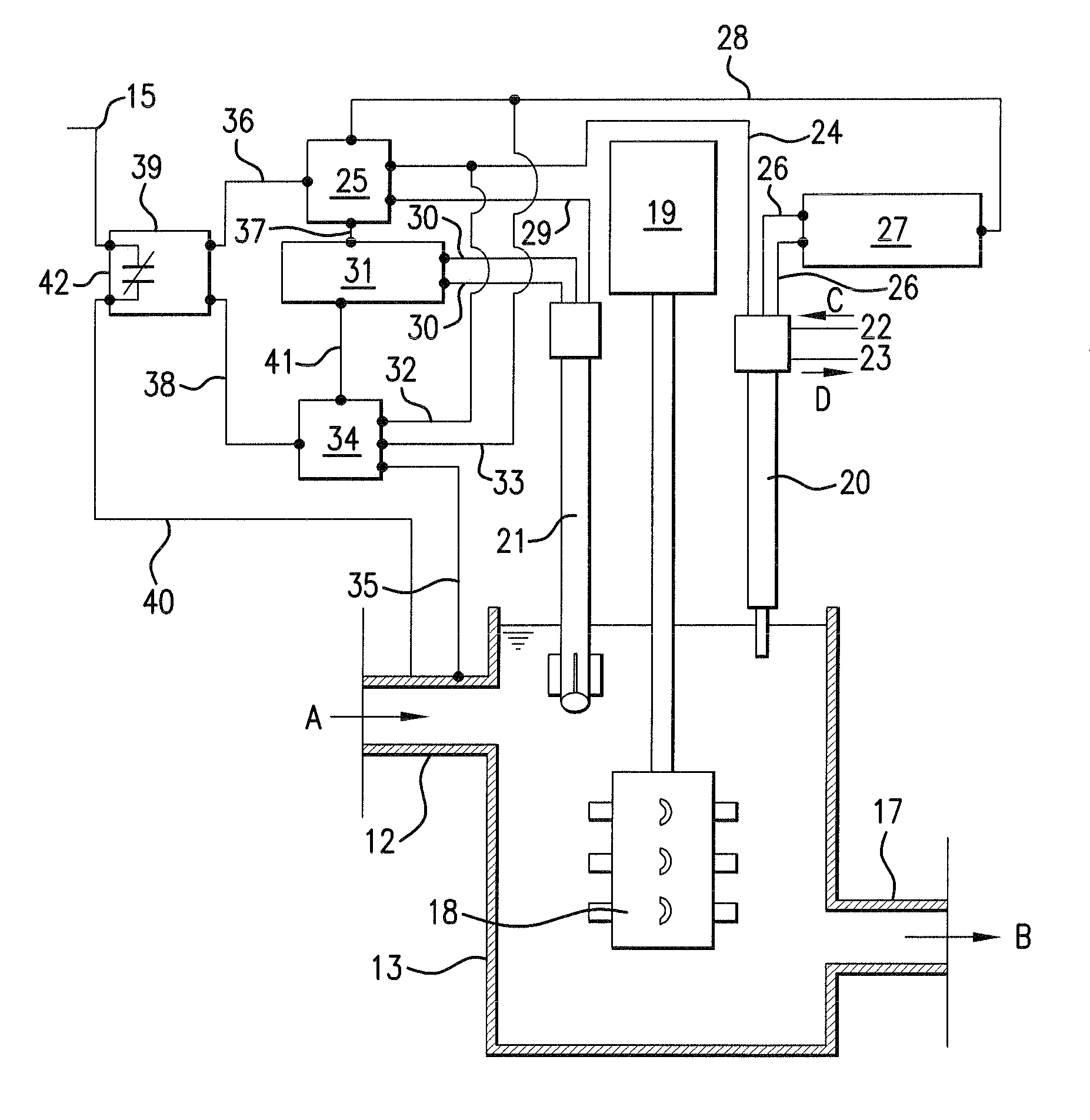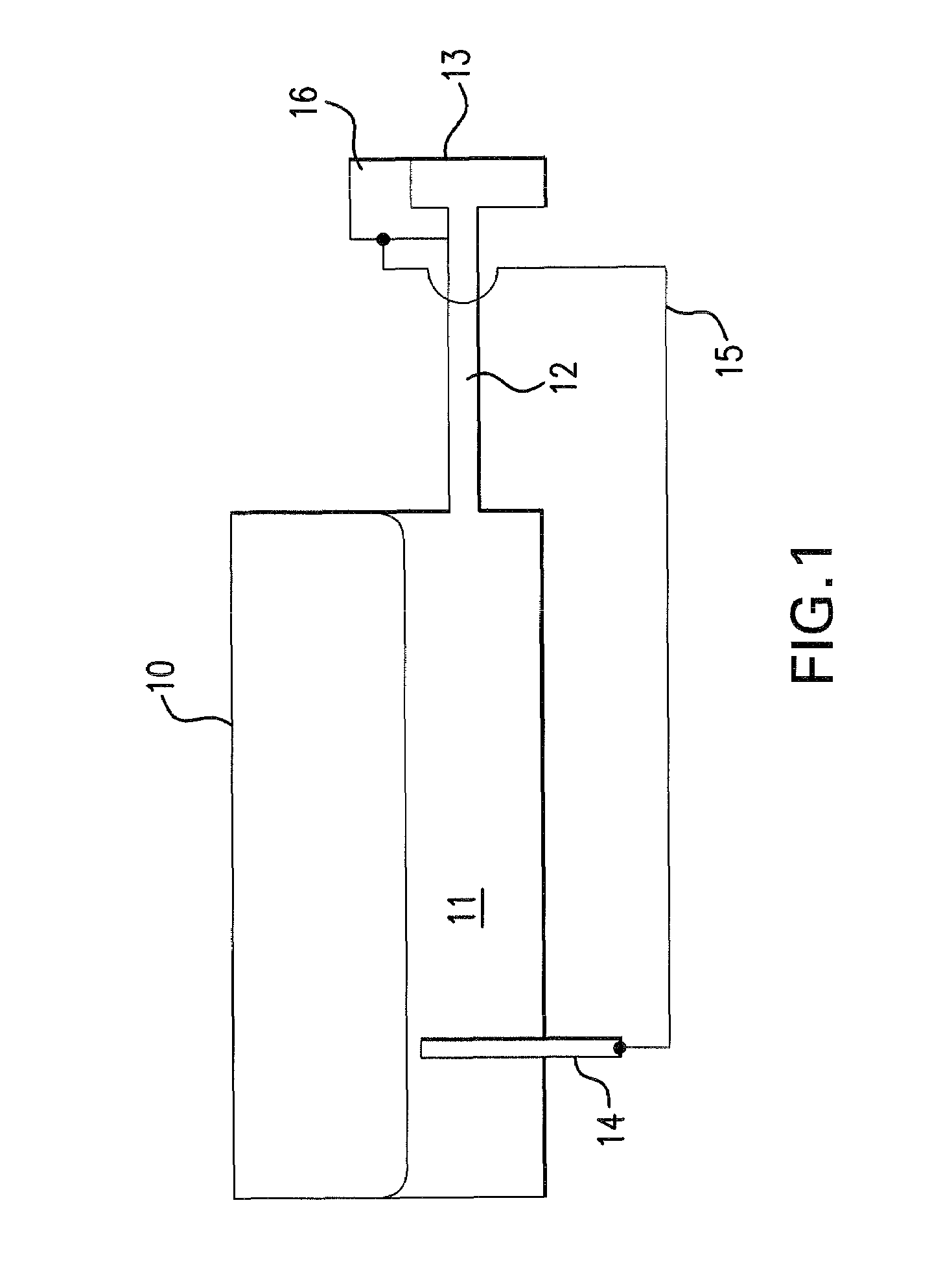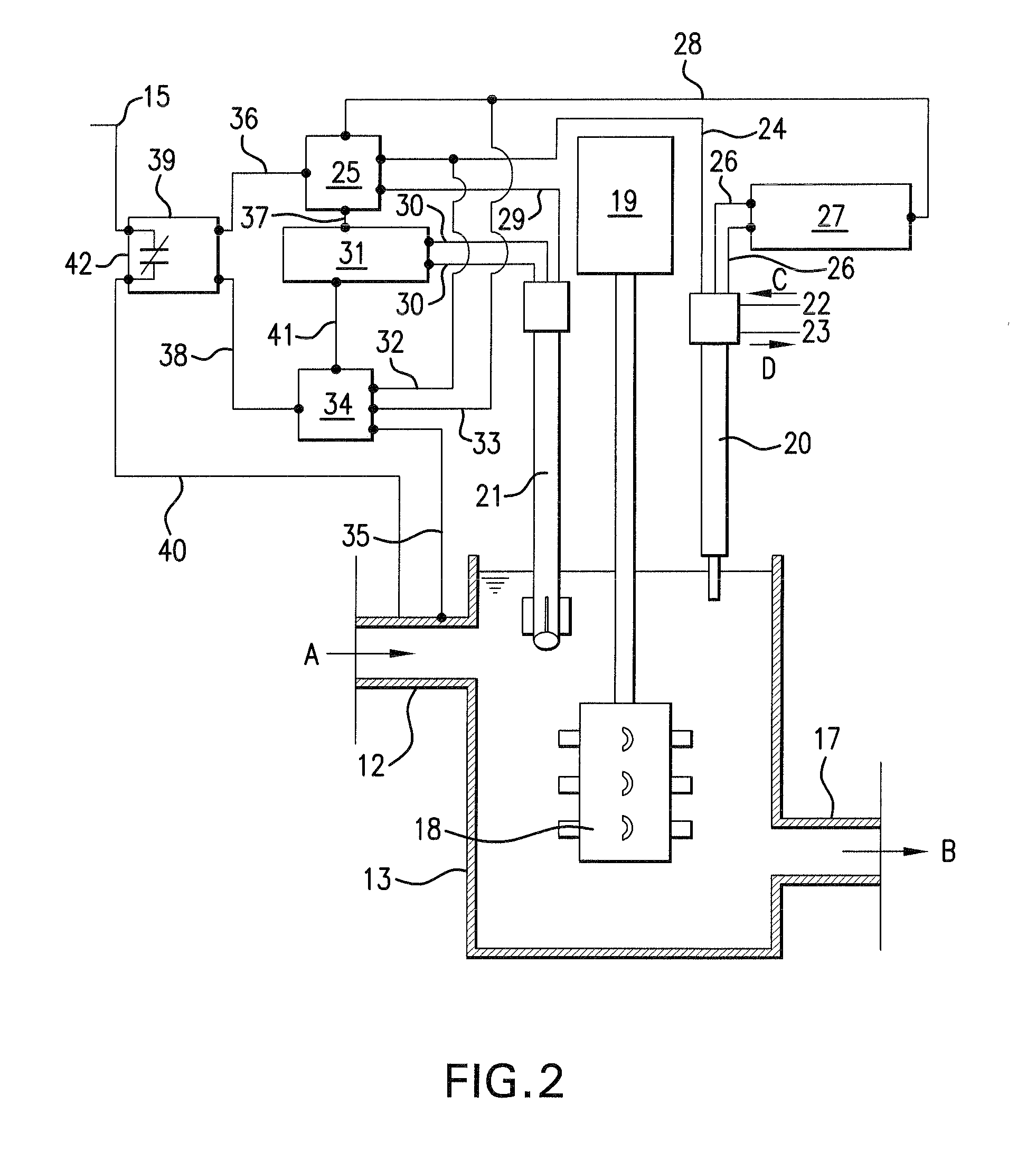Method for preventing bubbles on precious metal components
- Summary
- Abstract
- Description
- Claims
- Application Information
AI Technical Summary
Benefits of technology
Problems solved by technology
Method used
Image
Examples
Embodiment Construction
[0032]FIG. 1 shows a device having the features of the present invention, as a first exemplary embodiment. The figure shows a melting area 10 with glass melt 11 located therein. Melting area 10 is shown as a schematic illustration only. In particular, various areas for melting and refining are not shown in the figure. Melting area 10 is connected with a stirring crucible 13 via a feeder channel 12. In the exemplary embodiment shown, feeder channel 12 and stirring crucible 13 are composed of platinum or a platinum alloy. In addition, a counter electrode 14 is located in the melting area 10 in the region of the glass melt 11, the counter electrode being connected with a control system 16 by a line 15. Counter electrode 14 can also be located at another point. It is important that counter electrode 14 be located upstream of stirring crucible 13 and, in particular, upstream of a refining area.
[0033]FIG. 2 shows a schematic illustration of stirring crucible 13 and control system 16 in FI...
PUM
| Property | Measurement | Unit |
|---|---|---|
| oxygen partial pressure | aaaaa | aaaaa |
| partial pressure | aaaaa | aaaaa |
| oxygen partial pressure | aaaaa | aaaaa |
Abstract
Description
Claims
Application Information
 Login to View More
Login to View More - R&D
- Intellectual Property
- Life Sciences
- Materials
- Tech Scout
- Unparalleled Data Quality
- Higher Quality Content
- 60% Fewer Hallucinations
Browse by: Latest US Patents, China's latest patents, Technical Efficacy Thesaurus, Application Domain, Technology Topic, Popular Technical Reports.
© 2025 PatSnap. All rights reserved.Legal|Privacy policy|Modern Slavery Act Transparency Statement|Sitemap|About US| Contact US: help@patsnap.com



